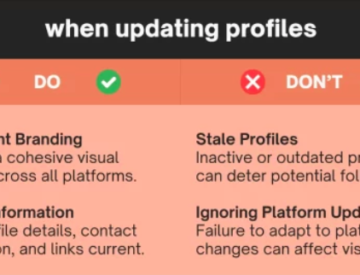In the tourism industry, like in any other industry, there are various trade shows where products are unveiled, contracts negotiated, sales being discussed and deals being sealed. But because we are dealing with travel marketing, it seems like we go overboard somewhat and spend our time traveling to trade shows or attending some.
Having spent the past 12 years evolving in the Canadian tourism industry, I find it somewhat overwhelming when I take the time to reflect on how many sales shows one can attend in a single year.
Local events
Depending on where your business is based, there are usually a variety of trade shows where one can meet tour operators, travel agents and industry key decision makers. Every year, Quebec suppliers meet with inbound tour operators, travel agents and motor coach tour organizers during Bienvenue Quebec. Other provinces hold similar events, such as Canada’s West Marketplace or Atlantic Canadian Tourism Partnership events.
Most of these events are based on a similar approach whereby there is a marketplace in which local suppliers get appointments of a specific duration of time with different buyers. For example, a Quebec City hotel gets to request 25-30 meetings over a period of two days with tour operators, group organizers or media representatives during which times both parties can discuss, present their offering and identify common grounds for business.
This formula has been going on for years, and it’s effective when there’s a right equilibrium of buyer-seller ration attending. (For the purpose of this article, I will focus on leisure sales show only, but there are just as many if you deal with meeting planners and the business market, if you deal specifically with media or if you’re in marketing or HR!)
International events – with appointments
If you cater to overseas markets or at least the US market, there is a slew of various trade shows to attend based on a similar approach. To name but a few: OMCA (Ontario Motor Coach Association), ABA (American Bus Association), NTA, etc. These shows are regional, with regards to attendees and scope.
On the national front, the Americans host their usual Pow Wow event usually around the same time as we have Rendez-Vous in Canada. These shows are pivotal if you aspire to sell your destination, attraction or venue to international tourists, via the travel trade – that is, wholesalers and inbound tour operators.
International events – without appointments
Finally, there is category which I refer to as international shows where there is no appointments per se, as these shows have a different format showcasing destinations and presenting educational seminars. Some examples? World Travel Market (WTM) in London, every november, FITUR in Madrid every January, or ITB, in Berlin, every March, to name only these ones.
Of course, there are many others in Asia and South America, but these three are among the world’s biggest and are the ones where Canada traditionally has been present over past years. These shows are over-sized, over-hyped and they under-deliver in my opinion, in particular if you focus on the value for money and return on investment. Because there are no set appointments, you need to “work the floor” and approach decision-makers, often through contacts and colleagues who have been attending for years.
What’s the outlook for travel trade shows?
For many years now, I have been reading or hearing about new technologies going to replace many of the business travel needs for transportation. It was thought that with the coming of Skype, for example, we would no longer need to go on sales mission and meet with local suppliers or buyers. I believe that is a near-sighted view of how business is conducted in the travel industry, because experts who express these so called predictions underestimate how much this is a “people’s industry”.
In the travel industry, we deal with Johnny at Hotel X, or Ruth at Ski resort YZ. When in trouble booking a client through a connecting flight, we deal with Joe, at Airline ABC. Notice we always go to a person first, the company matters less. Very often, we met these people during a show like Rendez-Vous Canada, not only during the 12-minutes set appointment, but also having a drink at the evening function. This is why, in my mind, travel trade shows will always have a key role in the sales cycle as a lead-generating and relationship-building agent.
Social media will replace some aspects, but not all
Where I think things will change, with the uprising of social networks, is in the prioritizing of all these shows. First of all, some of them will either disappear or transform. We are already seeing OMCA joining forces with ABA, Spotlight Canada no longer takes place in the UK, and Rendez-Vous Canada takes place over three days of meeting instead of four. As for expensive shows like WTM, ITB or FITUR, I feel like these are remains of another era, prior to internet, prior to social networks.
Nowadays, with the multiplicity of information platforms, any destination can showcase itself with awesome videos via its Youtube dedicated channel, choose and share stellar photography via its Flickr account, share the passion for its brand via its Facebook page or inform potential travelers and loyal followers alike through its Twitter feeds. To those who claim it’s still a great opportunity to meet with some key decision-makers, I say you could probably meet them anyway if you conduct a week-long of quality sales calls. And It will cost you a fraction of participating in these shows.
Like with most things in life, it remains a matter of balance. We need to strike that balance between time spent on the road meeting with industry partners and time spent at the office, using technologies to save time, human and financial resources, while remaining as effective or even more than when none of these technologies were available.
What are your thoughts on the evolution of travel trade shows?









Leave a Reply